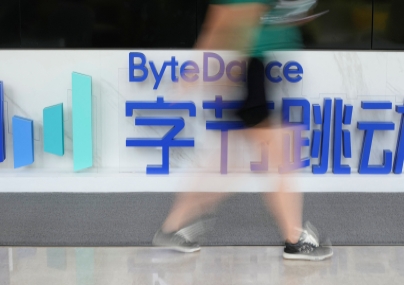
信息化正成为许多中国企业法务部门未来发展的关键词,以此应对后疫情时代愈加频发的风险和企业内部不断提升的效率要求。我们和几家法律科技服务提供商聊了聊:过去一年,他们如何为客户的痛点提供解决方案?他们又如何预测这一赛道未来的发展趋势?
当疫情带来的各类焦头烂额的问题暂且告一段落,企业的法务部门发现自己正面临着一种全新的挑战现状。如果用一句话来总结,那就是:愈发增长及紧迫的工作任务,以及愈发有限的资源。
近期多份报告揭示了法务部门在后疫情时代的困境。汤森路透发布的《2021年企业法务部门状况》报告指出,58%的受访团队面临着越来越大的工作量,与此同时29%却面临了缩减的预算。
寻求科技工具的帮助似乎成为了解决上述困境最为自然的答案。根据上述报告,30%的团队加大了科技支出,同时有44%的团队坦诚自己更加倚赖技术工具。而根据德勤发布的《2021年法律运营状况调查》,76%的被调法务团队承认他们有采纳新科技工具的需求,54%则透露他们已经制定了下一阶段的法律科技路线图。
中国企业的法务部门也不例外,位于江苏南京的南京钢铁股份有限公司法务团队就是很好的例子。团队负责人、南钢股份风险控制部联席部长吴斐告诉ALB,实际上自2017年起,他的团队一直致力于“用科技推动法律”,先后上线了两个版本的合同管理系统,以及争议解决系统。
尤其是2020年疫情初期借助上上签电子签约平台上线电子签,很好地印证了科技工具帮助团队应对危机、提高效率的功能。“当时全国快递停运,但工厂生产、物资保供不能停,电子签约非常高效地规避了影响。”吴斐回忆道,“我们和客商通过手机完成合同签署,电子合同随即传输到财务系统,经查阅后开展付款,保证了物资采购流程正常流转。”
效率第一
在中国,法律被视为文科分支,换言之,是一门主要靠人付出脑力的学科。但过去几年,法律科技供应商们一直致力于将这份攫取人力的工作实现部分自动化,以应对必然到来的“效率时代”的要求。
2018年,吕立山 (Robert Lewis) 律师参与成立了合通机器人。他在中国有近30年代理跨境交易的经历,认为“合同或法律文书是非诉律师最主要的作品”,因此将合同自动化作为法律科技创业方向。合通机器人目前提供智能起草、审核合同两大功能,并且推广“动态化合同”概念:“例如想起草一份经销协议,可以通过10分钟在线问答,利用系统生成超过1500万亿份不同版本。”
合同自动化能极大提升法务工作效率,这是由他们的工作内容决定的。“很多企业法务说自己80%的时间都在审合同,如果有工具提高效率,可以让他们做出更有战略性的贡献。”吕律师说。目前,合通机器人已经开始基于人工智能提供英文合同审核功能,并且不断训练机器人识别新审核点。
有时候,效率还意味着帮助法务实现从前无从企及的功能。
上上签电子签约是中国领先的电子签约云平台,它给ALB讲述了发生在客户身上的实例:好丽友集团中国区总法律顾问张剑君曾希望调出公司的经销商数据,但发现系统并不能搜索出准确数据,还要靠人力逐一拣选。这样的情况在签约上上签后发生了改变:现在经销商完成实名认证后,签约平台收集的数据会在SAP系统自动汇集,始终保持公司基础数据的准确性。另外,平台还会“多走一步”,在经销商实名签署协议时进行实时公证,降低了后期法务团队举证的难度。
“中国数以千万的企业互连是多点的、自由的,他们需要在一张大网里面互通,电子签约平台恰好可以织成这张大网。”
上上签电子签约
在上上签看来,中国数以千万的企业“互连是多点的、自由的,他们需要在一张大网里面互通”,电子签约平台恰好可以织成这张大网,并提供“更好地做生意”所需的一些前提:例如诚信和信任。“上上签的很多客户及他们的上下游供应商、经销商,也都是上上签客户,企业之间可以便捷地实现秒发秒签,上上签作为中立的第三方平台,天然解决了相对方之间的信任问题。”
此外,法务团队还可以借由平台,提升法务工作的执行效率。“法务制定的规则如何在业务过程中得到有效执行?”为此,上上签提供了合作对象的合规性数据分析;保障合同内容的不可篡改,还严格实现了合同流转中不同角色的权限分离,真正提升了法务工作的实际效果。
解决新问题
提升效率之外,面对不断变化的监管和商业环境,法务团队也需要借助科技工具,实现更快速的功能创新,这也是过去一年诸家法律科技供应商关注的问题。
吕立山律师给ALB举了合通机器人“E转通”产品的例子。2020年初中国实施新《外商投资法》,要求新法实施前设立的外商投资企业在2024年底前修改现有(对于外商独资企业而言)外商独资企业章程及(对于中外合资企业而言)合资合同和章程。“中国有52万余家外商投资企业,转化工作量巨大,远超出市场工作容量,必须有法律科技工具配合提高效率。”吕律师坦言。
合资企业的转化相对复杂,E转通可以通过几个步骤引导用户自动生成现有合资合同和章程的修订路线图,在此基础上再由律师完成“最后一公里”的修订,“可以节省80%的时间”。在吕律师看来,这个产品很好地体现了法律科技未来的工作模式:由机器完成枯燥的自动化过程,再由人脑实现最终的判断和优化。
法律科技公司的另一个创新方向,则是为中小企业提供可负担的科技工具:中国目前拥有4000多万企业,95%以上是中小企业,它们往往缺乏内外部法律支持,且很难负担高额的科技工具。
在吕立山律师看来,中小企业除了预算不足,法律服务需求不集中也是一个痛点。“我有一个集体常法的想法。”他说,“某些开发区企业的跨境交易业务需求很零散,愿意支付的费用也往往不为律师接受,需求和供给间产生了断层。科技+律师的服务方式可以弥合断层:由机器做前期辅助工作,律师负责判断与沟通,企业则可以采取集体采购的形式。”
接受度提升
虽然法务部门普遍承认科技的作用,但找到那个“对的工具”总需要花费一番周折,其中也包含了诸多考量。例如德勤的上述报告就揭示道,46%的被调法务团队尚未找到合适的科技工具;76%坦言他们还需要在工具之外完成工作;还有57%将科技工具缺乏灵活定制性作为最大担忧。
谈到布局技术工具时的首要考虑因素,南钢股份的吴斐坦言是“企业信息安全”,因此,新工具“与企业现有系统环境和功能的兼容性、与企业其他业务系统的交互性,以及科技工具的安全性”,就成了最重要的考察指标。
过去几年,上上签观察到越来越多“法务部门牵头,在企业引入电子签名服务”,因此“法律合规是前提,安全也是非常重要的考虑因素。特别是外企客户,经常涉及安全客审工作”。总体来说,企业关注问题可以总结为:协助大型集团企业实现印章合同统一管控;在多个场景开展电子签时实现数据、权限隔离;在合同签署环节防范法律风险;以及保障数据安全,保护个人隐私数据等。
持续近两年的疫情继续提升了法务团队对科技工具的接受程度,上上签指出,与此同时,为客户提供及时的后续服务成为关键。“不论实施还是业务推广上线阶段,上上签基本都会承接客户遇到的阻碍业务开展的需求。”上上签如此引用一位客户的反馈,“功能上线使用一段时间后会及时回访,并收集使用该功能遇到的问题。能结合客户实际业务情况不断优化,帮助客户业务开展更加顺利。”
谈到团队未来关注的技术方向,南钢股份的吴斐坦言,他的团队“痛点之一就是数据利用不够……系统伴随使用沉淀海量数据,通过既往数据预知未来或为未来提供决策参考的力度不够,这是我们未来升级的方向之一”。
谁站在中间?
法务团队遭遇的另一个问题,则是恰当人才的缺乏。根据德勤的报告,只有35%的受访法务团队认为团队成员具备很好的科技技术,同时只有30%相信团队成员正在有效利用科技工具。
“谁站在中间?谁能把法律知识和技术功能结合起来?我认为这是法律科技最重要的问题。”吕立山律师坦言。实际上,不仅法务部门需要融贯法律和科技的人才,法律科技公司对此也有迫切需求。“尤其在研发智能审核合同产品时,不懂法律的人定不对审核点,科技专家没法判断是否存在风险要素。”吕律师说,“在中国懂法律也懂技术的人很少,我们的团队也是通过好几年学习、训练,才拥有了这样的人才。”
“法律科技最终要以律师为中心,为法律需求服务。”
吕立山,合通机器人
正如吕立山律师所说,“法律科技最终要以律师为中心,为法律需求服务”,作为汇集需求和科技工具的第一手使用者,法务团队也正在尝试“法科融合”,近年来频现推出自研技术工具的法务部门,南钢团队就是其中之一。吴斐告诉ALB,今年6月,南钢法务团队上线了“匠心打造的诉讼管理系统,融合了南钢的42步法,并集管理和专业需求为一体”,未来,团队还会“尝试将争议解决管理系统打造成标准化产品,分享给其他有自办案件需求的集团化企业”。
下一步发展
在欧美,法律科技近年成为新的投资热门领域,7月,美国在线法律服务网站LegalZoom在纳斯达克上市,募资5.35亿美元;多家法律科技提供商也在今年完成多轮融资。在中国,法律科技虽然已有近20年探索史,但仍处在起步阶段,业内人士又如何看待下一步的研发及融资前景?
“融资最近几年有成功,也有失败。”吕立山律师坦言,“四五年前法律科技有过一轮融资热潮,大概三年前进入融资冬天……我认为很多投资人还是比较看重技术,但不一定懂法律。其实人工智能在法律科技领域的适用范围比较窄,但投资人最看重的就是人工智能,这也会形成一定落差。”
但他对法律科技公司未来在中国的前景保持乐观,因为需求就在那里。“律所律师想要把解决方案流程化;与此同时企业法务希望提高效率,更多体现自身价值……特别欢迎有更多人跟我们站在一起。”他说。
EFFICIENCY FIRST
Digital transformation has become a key goal of many in-house teams in China that are hoping to better tackle risks, and also become more efficient. ALB speaks to LegalTech service providers on how they have solved clients' pain points in the past year and what they see as future trends in this field.
With all the headaches caused by the pandemic, in-house legal teams now find themselves facing a whole new set of challenges, which, broadly speaking, rely on increasingly limited resources to manage growing workloads.
A number of recent reports have revealed the plight of in-house teams in the post-pandemic era. For example, 50 percent of the in-house teams surveyed by Thomson Reuter's 2021 State of the Corporate Legal Department report have seen workloads growing, while 29 percent have experienced budget cuts at the same time.
Turning to technological tools seems to be the most natural solution to this dilemma. According to the same report, 30 percent of the in-house teams have increased spending on technology, while 44 percent reported greater reliance on technology tools. In addition, according to Deloitte's 2021 State of Legal Operations Survey, 76 percent of the in-house teams surveyed have adopted new technology tools, while 54 percent have defined their LegalTech roadmaps for the next phase.
In-house teams of Chinese enterprises are no exception. Wu Fei, head of the legal team of Nanjing Iron & Steel Co., Ltd and co-director of its risk control department, tells ALB that his team, with a "technology-driven focus," has launched two updates to its contract management system since 2017.
In particular, the team leveraged the e-signature function on BestSign's e-signature platform during the early days of the pandemic, showcasing the role of technology tools in helping the team cope with crisis and improve efficiency. "Although express delivery was halted during that time, using the e-signature system has helped us avoid adverse effects and guarantee continued production and product supply,” Wu recalls, "at that time we signed contracts with clients on mobile phones, and the executed electronic contracts were immediately uploaded to the accounting system, enabling payment to be made after verification. In this way we managed to maintain the smooth operation of the procurement process.”
EFFICIENCY FIRST
Over the past years, LegalTech service providers have been committed to partially automating labour-intensive legal processes in response to the inevitable "age of efficiency.”
In 2018, Robert Lewis co-founded docQbot. With nearly 30 years of experience representing clients in cross-border transactions in China, Lewis believes "contracts or legal documents are the primary work products of non-litigation lawyers.” That is why he selected contract automation as the focus of his LegalTech venture. DocQbot currently features two main functions: Contract auto-drafting and contract auto-review. It also promotes the concept of "dynamic contracts.” "For example, if you want to draft a distribution agreement, you can use the system to generate more than 1500 trillion different versions after only a 10-minute online Q&A," he notes.
Contract automation can greatly improve the productivity of in-house teams. "Many corporate counsel say 80 percent of their time is spent reviewing contracts. Therefore, having tools to improve efficiency will allow them to make more strategic contributions," says Lewis. At present, docQbot provides English-language contract review powered by artificial intelligence, and has been constantly training the robots to identify new risks to review.
Sometimes, improved efficiency also enables in-house teams to perform functions that were not possible before.
BestSign, China's leading e-signature cloud platform, cites a real-life example of one of its clients. Zhang Jianjun, General Counsel of Orion Group China, once wanted to retrieve the company's distributor data but found that the existing system was unable to turn up accurate search results. As a result, data still needed to be sorted manually.
Adopting the BestSign platform solved this issue. With BestSign, data about distributors that have gone through real name authentication are gathered automatically in the SAP system, thereby maintaining the accuracy of the company's basic data. In addition, the platform "goes the extra mile" by completing real-time notarization at the same time when a real-name-authenticated distributor signs an agreement, reducing the potential burden of proof for the in-house team subsequently.
“Tens of millions of Chinese enterprises are interconnected in multiple points, and need to 'speak to each other' in a big network, and the e-signature platform is exactly this a big network.”
BestSign
To BestSign, tens of millions of Chinese enterprises "are interconnected in multiple points, and need to 'speak to each other' in a big network,” and the e-signature platform is exactly this a big network. It also provides conditions precedents for "better business relationship,” such as good faith and trust. "Many BestSign clients have upstream and downstream vendors and suppliers who are also BestSign clients, and this makes instant review and approval of e-signatures between them possible. As an independent third-party platform, BestSign is the natural solution to trust issues between business counterparties."
In addition, in-house teams can leverage the BestSign platform to improve the implementation efficiency of in-house teams. To answer the question of "how can the rules made by the in-house team be effectively enforced in the business process,” BestSign provides compliance data analysis of business partners, guarantees contracts are tamper-resistant, and strictly segregates the power of different roles in the contracting process, thus improving the tangible impact of the work of in-house teams in a true sense.
ADDRESSING NEW ISSUES
Apart from improving efficiency, in-house teams also need to leverage technology tools to enable faster functional innovation in the face of changing regulatory and business climates. This has been an area attracting the attention of LegalTech providers over the past year.
Lewis cites docQbot's "FIE-conversion" function as an example. In early 2020, China promulgated the new Foreign Investment Law, which requires foreign-invested enterprises established before the enforcement of the new law to amend their existing articles of association (for wholly foreign-owned enterprises) and joint venture contracts and articles of association (for Sino-foreign joint ventures) by the end of 2024. "With more than 520,000 foreign-invested enterprises in China, this poses a huge workload far beyond the then available working capacity of the market. LegalTech tools are thus indispensable to achieve better efficiency," Lewis points out.
The organizational instrument amendment work is more complicated for joint ventures. However, the "FIE-conversion" function guides users to automatically generate a roadmap for amending existing joint venture contracts and articles of association in a few steps, enabling lawyers to complete "the last mile" amendments based on the system-generated version, thus "saving 80 percent of time.” In Lewis' opinion, this product reflects the future working model of LegalTech tools: the machine automates the boring process, while the human brain makes an ultimate judgment and optimizes the final output.
Another focus area of innovation for LegalTech firms is to provide affordable technology tools for small and medium-sized enterprises (SMEs). China has more than 40 million enterprises, 95 percent of which are SMEs. Such enterprises often lack internal and external legal support and are financially strained to afford costly technology tools.
In addition to insufficient budget, Lewis believes another pain point facing SMEs is their fragmented needs for legal services. He says, "I am thinking whether we can adopt the model of ‘community legal counsel’ for a number of SMEs. For example, for some enterprises in China’s special economic development zones, their legal demands for cross-border transactions are infrequent, and the fees they are willing to pay are not acceptable to lawyers. This has created a disconnection between demand and supply. The technology-plus-lawyer approach may bridge this disconnection: preliminary supporting tasks can be left to machines, lawyers can then dedicate their time to decision making and communication, and enterprises can procure such services collectively."
WIDER ACCEPTANCE
While in-house teams generally acknowledge the role of technology, finding the "right tool" involves a trial-and-error process with many different considerations. The Deloitte report above, for example, notes that 46 percent of the surveyed teams have not yet found the right tools, 76 percent admit they still need to do extra work outside of the tools, and 57 percent cite the lack of customization of technology tools as the biggest concern.
Wu admits "enterprise information security" is the primary consideration before adopting technology tools. As such, "the compatibility of the new tools with the existing system environment and functions, their interoperability with other business systems, and the security of the technology tools" are the most important factors to be examined.
BestSign has observed that more and more "in-house teams have taken the lead in introducing electronic signature services in enterprises" over the past few years. Therefore, "legal compliance is the base, while security is another very important factor. In particular, foreign-invested enterprises usually include security in their client audits.” In a nutshell, areas of concern for enterprises may be summarized as: centralized management and control of seals and contracts for large group companies; segregation of data and power in multiple e-signature scenarios; prevention of legal risks in contract signing; data security and protection of personal privacy and data.
As BestSign points out, the pandemic that has lasted nearly two years continues to drive wider acceptance of technology tools among in-house teams. At the same time, it is critical to provide prompt follow-up services for clients. "BestSign would look into client needs to tackle issues that hinder business development, whether in the implementation phase or in the business roll-out /go-live stage.” One BestSign client provides the following feedback: "BestSign would visit clients some time after a new function has gone live to ask for feedback, and collect issues reported by clients related to their use of the function. It continuously optimizes system functions in light of the actual business situations to help clients better carry out their business."
Talking about the technology tools on the team's radar, Wu shares that "one of the pain points is the inadequate exploitation of data... The system generates massive data during usage, but existing data has not been adequately exploited to predict future trends or to serve as reference for future decision making. This should be one area for our future upgrading."
TALENT SHORTAGE
Another challenge facing in-house teams is the lack of skilled personnel. According to the Deloitte report, only 35 percent of the teams surveyed believe their team members have adequate technology skills, and only 30 percent think that team members are effectively leveraging technology tools.
"Who stands in between? Who can combine legal expertise and technological functions? I think this is the most important issue facing the LegalTech sector,” says Lewis. As a matter of fact, both in-house teams and LegalTech firms have urgent needs of talents who can integrate legal expertise and technological know-how. "This is particularly important when it comes to developing AI-powered contract review products. Without legal expertise, it is difficult to identify the right risk factors, as technology experts are not capable of doing the judgments," says Lewis, "In China, few people are both legally and technologically competent, and it has taken us years of study and training to groom such resources in our team."
"LegalTech tools must ultimately be lawyer-centered to serve legal needs.”
Robert Lewis, docQbot
Just as Lewis says, "LegalTech tools must ultimately be lawyer-centered to serve legal needs.” As first-hand users of technology tools, in-house teams are also attempting to integrate legal expertise and technological know-how. Over recent years, many in-house teams have launched proprietary technology tools, Wu's team being one of them. Wu tells ALB that this June, his team launched "a tailored litigation management system that incorporates Nanjing Iron & Steel's 42-step litigation approach, and integrates management and specialized needs.” Going forward, the team will "try to standardize the dispute resolution management system, and share the product with other group companies that need to handle cases on their own."
FUTURE OUTLOOK
LegalTech has become a hot investment target in recent years in Europe and the United States. In July, LegalZoom, a US online legal services website, went public on NASDAQ, raising $535 million. Several LegalTech service providers also raised capital from multiple rounds of financing this year. However, the LegalTech sector is still in its infancy in China despite two decades of exploration. Where do market insiders think the industry will be in terms of R&D and financing prospects in the next phase?
"We have seen successes and failures in financing in recent years," Lewis admits. "The LegalTech sector witnessed a financing craze about four, five years ago, but entered a financing winter three years ago... I believe many investors are more technology-focused and are not necessarily legally competent. For example, the application of AI is limited in the LegalTech field, but investors value AI the most. This will also lead to gaps."
But he remains optimistic about the future prospect of LegalTech companies in China, as there is definitely demand. "Both law firms and lawyers want to automate the processes for solutions, and in-house counsel want to improve productivity and create better values... We really welcome more people to join force with us," he says.
To contact the editorial team, please email ALBEditor@thomsonreuters.com.


